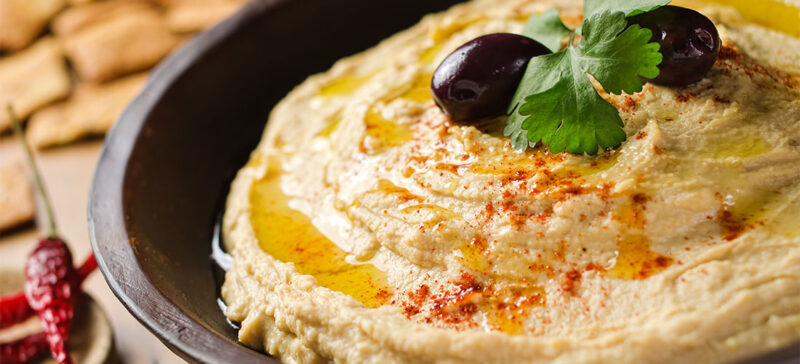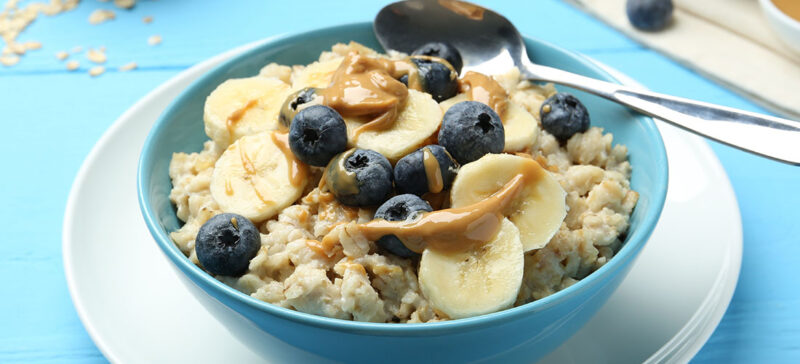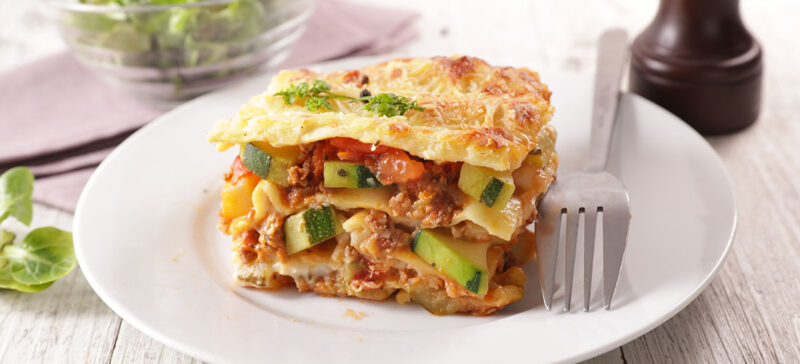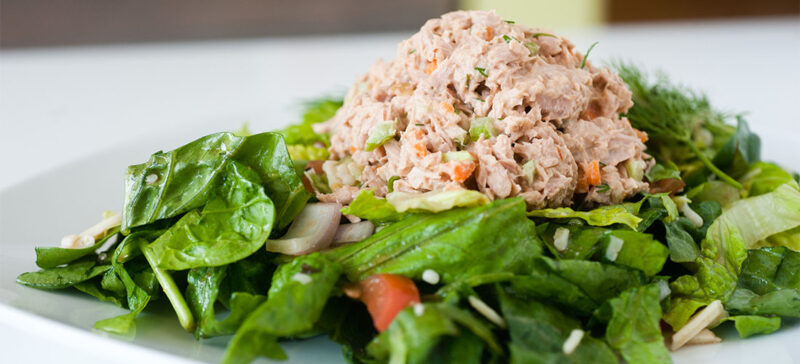Preparing healthy food at home and managing meals on a budget can go hand-in-hand. Here are some ideas.
Cooking for yourself? Working with a tight food budget? You may be wondering how to eat well at home. The good news is that you can nourish your body with delicious, wholesome foods without breaking the bank.
Let’s take a page from the Mediterranean Diet playbook, known for its emphasis on fresh, whole foods that are good for your health. The plant-forward Mediterranean diet leans into legumes, nuts, and other protein sources that cost less than meat. Here are some ideas to explore.

Legumes (Beans)
Legumes include black beans, kidney beans, cannellini beans, lima beans, blackeye peas, chickpeas, lentils, split peas, and even green peas. They offer many essential nutrients, including protein and fiber. About one-quarter cup of these legumes has the same amount of protein as an ounce of meat. This makes them a powerhouse of plant-based protein—and an inexpensive meat substitute. You can buy beans in cans for easy preparation. Dried lentils and split peas cook quickly with no pre-soaking (as required for other dried beans). How can you use them? Try:
- Hummus, a chickpea spread that includes tahini, lemon juice, olive oil, and garlic. It’s easy to make from a can of chickpeas. All you need is a blender or food processor. Try using it as a dip with cucumbers or carrots, or just spread it on whole-grain crackers.
- Bean soup, made with your favorite beans or bean combinations. Common add-ins include tomatoes, onions, carrots, and celery. You can season it to your taste.
- Split pea or lentil soup: These cook up quickly and can lend themselves to a variety of tastes. Spices like turmeric and curry deliver exciting flavors.
- Chilled bean salad: Easy to make, a bean salad can serve as the centerpiece for lunch several days running. Almost any combination of canned beans works well with olive oil, apple cider vinegar, a few drops of honey, or a splash of sugar. You can add chopped onions or other vegetables.

Nuts
Economical choices like peanut butter have been a mainstay of convenience and healthful eating for decades. (Peanuts are technically a legume, but most people use them like other nuts.) Like beans, nuts deliver on protein, fiber, and other key nutrients. They’re high in fat, but it’s a healthy form of fat. Just be careful not to overeat nuts, because they are dense in calories.
When you’re buying nut butter, look for brands that list just nuts and possibly salt as the ingredients. To keep it healthy, you’ll want to avoid products with added sugars or hydrogenated vegetable oils. Today, there are many interesting options for nut butters, including almond, cashew, and nut butter blends. Try them for:
- A nut butter sandwich on whole-grain bread. You can add in sliced banana, sliced apples, or mashed berries for a nutrition boost.
- Nut butter toast – just spread nut butter on toast and jazz it up with cinnamon or sliced fruit.
- Peanut butter in oatmeal – an easy way to boost the protein in this popular breakfast item.
- Almond butter spread on apple slices
A handful of nuts is a convenient, healthful snack. Ideally, choose unsalted nuts. Be careful of nut snack blends. Some are more expensive than plain nuts, and many have added ingredients like sugars that you may not want. For a nutrition boost, you can add chopped nuts to pancakes, muffins, yogurt, oatmeal, or salads.

Fruits and Vegetables
When you make a meal, fruits and vegetables should make up half your plate, experts suggest. They’re a great source of fiber, vitamins, and minerals, and they can help you feel full without adding excess calories. They are the cornerstone of plant-forward eating. If you choose what’s in season, you can usually get a good buy in fresh produce. You can look for sales in canned and frozen produce for a healthy mainstay, too. Some ideas:
- Roasted vegetable meals: Roast an assortment of chopped, fresh vegetables on a sheet pan with a small amount of lean chicken, feta cheese, olive oil, garlic, lemon juice, and oregano for a simple meal. Try any combinations and seasonings you enjoy. Just remember to use lots of fresh vegetables.
- Vegetable add-ins: Whatever your favorite entrée is, try sneaking in some extra vegetables. In macaroni and cheese, for example, you can swap in chopped cauliflower for half the pasta. For cooked pasta, just stir in a bag of frozen spinach near the end of cooking. For lasagna, try adding in zucchini, mushrooms, or eggplant. You can also add grated carrots or mashed beans to a meatloaf. If you like tacos, try switching up the filling to a vegetable-forward blend of peppers, mushrooms, onions, mashed beans, and just a small amount of meat. For any sandwich, you can add sliced cucumbers, tomatoes, or a handful of fresh greens to boost the nutrition. The possibilities are endless.
- Salad entrees: Fresh greens are an important part of healthy eating, especially for cognitive health. You can make a salad into a meal with any number of satisfying combinations. Olive oil and vinegar make for an easy dressing.
- Fruit snacks: A plain piece of fresh fruit you enjoy is one of the healthiest ways to savor the goodness. No preparation required! You can also pair fruit chunks with cottage cheese or yogurt for some added protein.

Canned Seafood
Eating seafood at least twice a week is recommended in the Mediterranean diet and other expert nutrition advice today. Fatty seafood in particular gives you omega-3 fats, which are good for heart health, the immune system, and cognitive health. Fresh seafood can be expensive, but canned tuna, salmon, sardines, mackerel, and other fish are economical choices, especially if you watch for weekly grocery sales. Here are some ways to try them:
- Seafood add-ins: Add canned salmon to pasta and vegetables for a simple one-pot meal. Try adding sardines or canned salmon to a grilled cheese sandwich or a macaroni and cheese dish. You can also open a can of sardines or salmon for a quick, healthy salad-topper.
- Tuna salad: With a little mayonnaise, chopped celery, and chopped onion, you can transform a can of tuna into an entrée. Spread it on bread, or top salad greens with a scoop of tuna salad for an easy meal. When choosing mayonnaise, opt for one made with olive oil or avocado oil for healthy fats. You can change up tuna salad with your choice of herbs, spicy peppers, or even tropical fruits. Some people do an open-faced bake with added cheese.
- Salmon loaf: Salmon works well for fresh salads as well as hearty classics like salmon loaf baked with breadcrumbs, eggs, and seasonings. Its sliceable goodness may see you through several meals.

More Resources
Learn more about healthy eating for healthy aging in our blog. To get the details on the Mediterranean Diet, download the Healthy Eating for Healthy Aging PDF in Aging Resources.
If meal preparation is a challenge, you may also want to connect with CoAction’s Senior Nutrition Program, which supports seniors who struggle to get enough food or with cooking. You can also check out the many congregate meal sites in Northwest Indiana, where older adults gather for good food and companionship. Local food banks, such as the Food Bank of Northwest Indiana, provide essential support to older adults, including Mobile Markets at varying locations and supplemental grocery deliveries to over 1,900 seniors in the Region.

